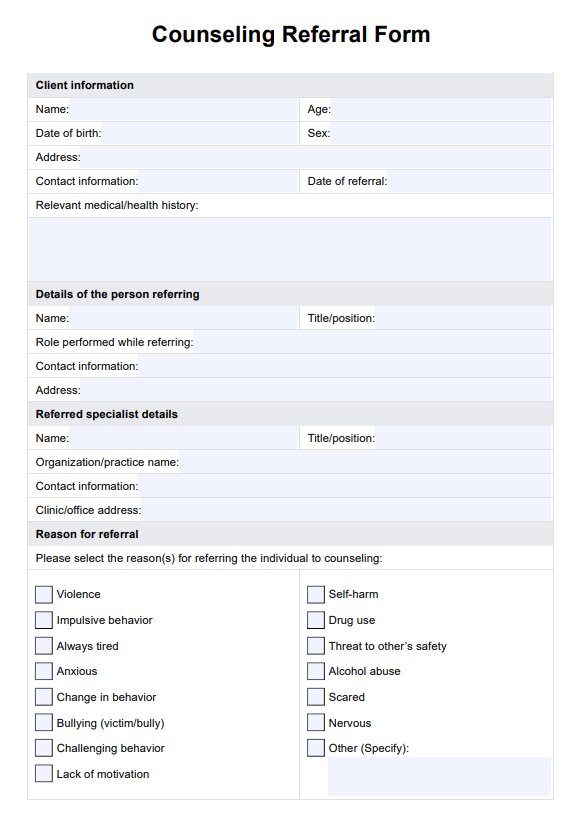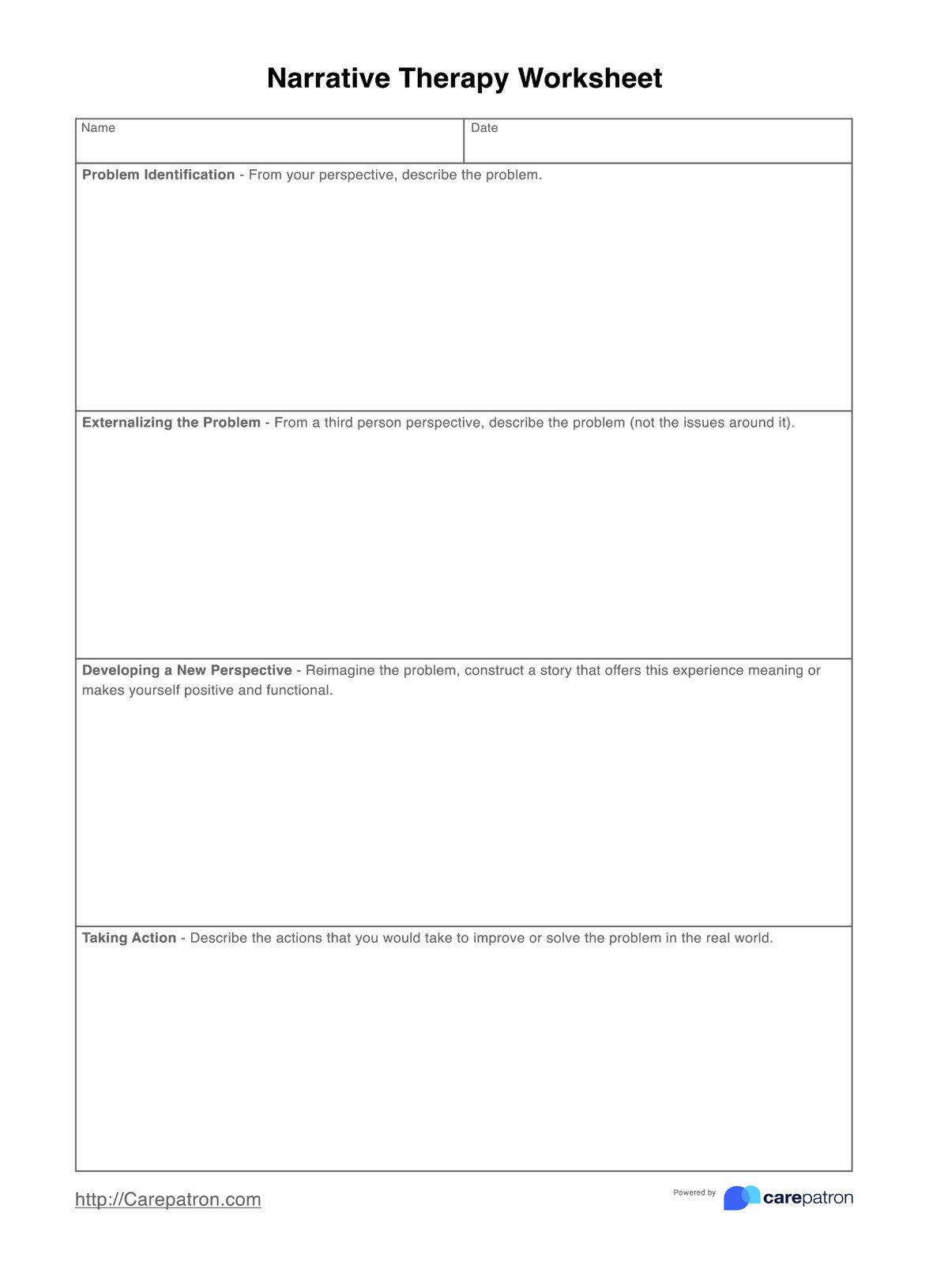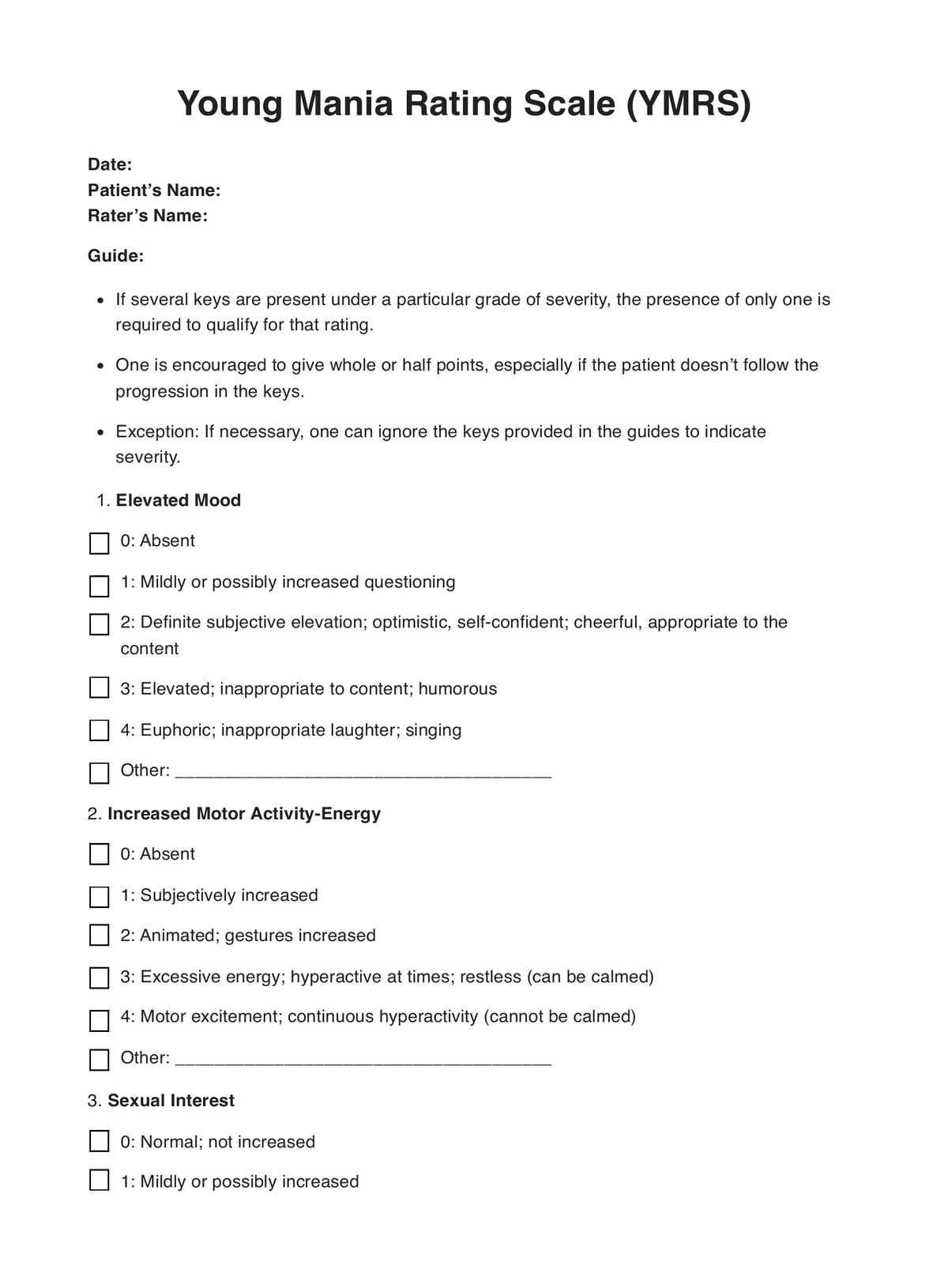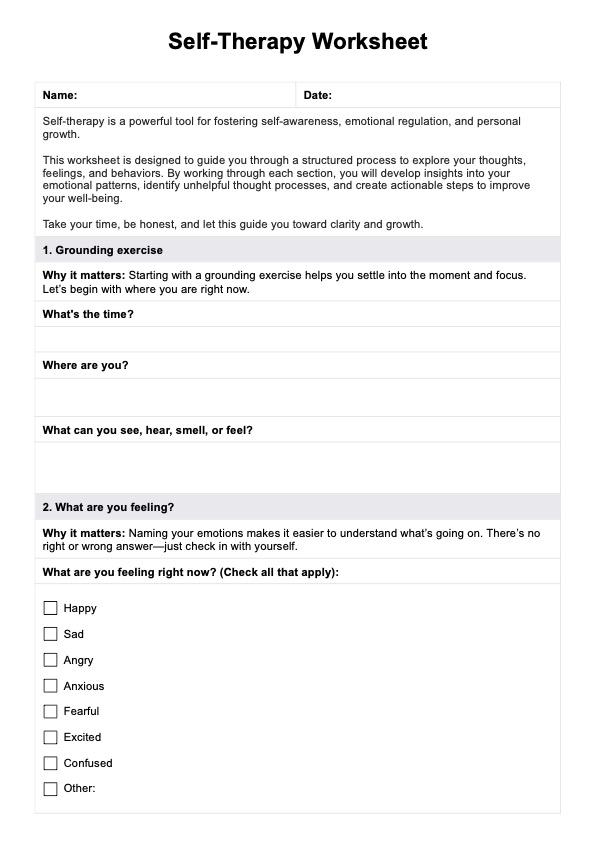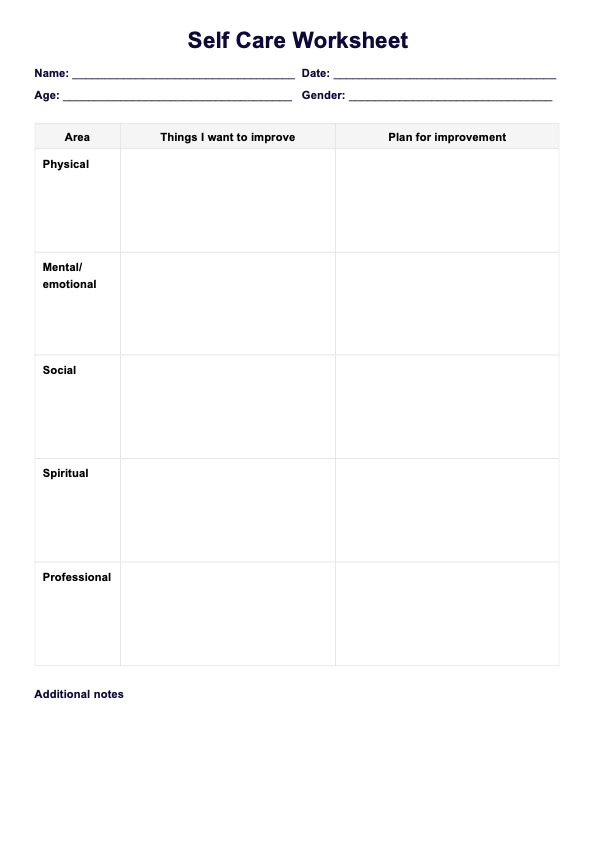Student Internalizing Behavior Screening Scale (SIBSS)
Use the Student Internalizing Behavior Screening Scale (SIBSS) to gauge if certain students are at risk.


Understanding student risk
Student risk refers to the presence of behaviors or conditions that put a student at a higher likelihood for adverse outcomes, such as academic failure, delinquency, or mental health problems. These risks can manifest in various forms, including externalizing and internalizing behaviors.
Internalizing behavior refers to the tendency to turn emotional distress inward, leading to symptoms like sadness, withdrawal, and anxiety. This can include specific disorders such as major depressive disorder, generalized anxiety disorder, and post-traumatic stress disorder (Chou et al., 2015).
On the other hand, externalizing behaviors involve acting out or displaying disruptive behaviors towards others. These may include aggression, hyperactivity, and attention problems.
Both internalizing and externalizing behaviors can significantly impact a student's academic performance, social relationships, and overall well-being.
Mental disorders, including anxiety disorders and depressive disorders, are some of the most common mental health issues among children and adolescents. According to the Diagnostic and Statistical Manual (DSM), childhood anxiety disorders affect around 25% of children and adolescents. In comparison, approximately 5% of young people struggle with depressive disorders (Substance Abuse and Mental Health Services Administration, 2016).
Separation anxiety disorder, social anxiety disorder, and panic disorder are among the most prevalent childhood anxiety disorders. These conditions can significantly impair a child's ability to function in school and other areas of life. Additionally, they may also co-occur with depressive symptoms or disorders.
Risk factors for developing internalizing disorders can include genetics, environmental stressors, and traumatic events. Children who experience adverse childhood experiences, such as abuse or neglect, are also at a higher risk for developing internalizing disorders (Parenting For Brain, n.d.).
Printable Student Internalizing Behavior Screening Scale (SIBSS)
Download this Student Internalizing Behavior Screening Scale (SIBSS) to assess if students are at risk.
Student Internalizing Behavior Screening Scale (SIBSS) Template
Student Internalizing Behavior Screening Scale (SIBSS) Example
How to use the Student Internalizing Behavior Screening Scale (SIBSS)
One way to gauge the risk levels of a student is to use assessments such as the Student Internalizing Behavior Screening Scale (SIBSS). This assessment is easy and quick to use because only a few items must be answered. It's also often paired with another student risk-related assessment called the Student Risk Screening Scale (SRSS), for which we also have a guide.
The Student Internalizing Behavior Screening Scale focuses on the internalizing behaviors of students believed to be at risk or confirmed to be at risk. Here are the things the scale will look into:
- Nervous or fearful
- Bullied by peers
- Spends time alone
- Low academic achievement
- Withdrawn
- Sad or unhappy
- Complains about being sick or hurt
Those using this scale to assess students only need to do two things. The first thing they need to do is rate the items above with one of the following:
- 0 = Never
- 1 = Occasionally
- 2 = Sometimes
- 3 = Frequently
The second thing they need to do is add up the scores based on the ratings they gave per item. To interpret the scores of each student, they can refer to the following ranges and designations:
- 0 to 3 = Low risk
- 4 to 8 = Moderate risk
- 9 to 21 = High Risk
Just to put it out there, the Student Internalizing Behavior Screening Scale's results are insufficient when determining what interventions and support should be considered for a particular student. It's always best to use other assessments such as the Student Risk Screening Scale (SRSS) and other school-related data concerning the student (e.g., their test scores, overall subject scores, disciplinary records, absence records, detention records, etc.).
When is it best to use the Student Internalizing Behavior Screening Scale (SIBSS)?
The Student Internalizing Behavior Screening Scale is an assessment designed to be administered twice a year. If you are an educator, school child counselor, or part of an educational organization responsible for assessing children for potential risks and challenges, it is recommended to use this assessment once per semester. By doing so, you can effectively monitor even the slightest changes.
It is important to note that when using this assessment to evaluate students, it should be approached to understand and support them rather than isolate or exclude them from any aspect of their academic and personal lives. The assessment should be viewed as a tool to determine the type of assistance that you and your colleagues can provide based on the students' scale results, other evaluations, and school data such as test scores, detention records, and attendance records.
It is crucial to emphasize that this scale should not be used to label students or identify specific personality traits. Its purpose is to identify critical areas of concern that may harm a student's academic journey and overall school experience. This information can help create a safe, non-judgmental environment where students learn and thrive. Additionally, it can guide educators in allocating resources to ensure every student has an equal opportunity to achieve academic excellence and graduate on time.
What are the benefits of using the Student Internalizing Behavior Screening Scale (SIBSS)?
The scale helps educators identify factors that may put a student at risk
The SIBSS is a comprehensive tool that assesses internalizing behaviors in children and adolescents. When used regularly, it can help educators identify risk factors that may negatively impact students' academic and personal lives. These risks may include internalizing disorders such as anxiety and depression, which are among the most common mental health disorders in children and adolescents.
It pairs well with the Student Risk Screening Scale (SRSS)
The Student Internalizing Behavior Screening Scale (SIBSS) can be used alongside the Student Risk Screening Scale (SRSS), which focuses on externalizing behaviors. Using both scales, educators can better understand a student's risk factors and needs. This is especially important because internalizing behaviors are often connected to externalizing behaviors, and addressing one without considering the other can leave students without the necessary support.
It can be used to monitor changes in students over time
The Student Internalizing Behavior Screening Scale (SIBSS) can be used as an ongoing tool, similar to the Student Risk Screening Scale (SRSS). Administering the SIBSS twice a year is recommended to monitor changes in a student's internalizing behaviors. By tracking these changes, educators can identify if there has been any improvement or worsening of a student's mental health. This information is essential as it allows them to adjust their interventions and support accordingly.
How can Carepatron support professionals with school counseling and student therapy-related work?
If you're reading this guide, you're likely an educator, a school counselor, or a member of an educational body tasked to gauge whether students are at risk. If so, we hope that this mini-guide was a good introduction or refresher to the scale, and we hope that the template we made helps you gauge students who might be struggling with their respective academic journeys.
While we still have you, we'd like to ask you to check out more of the Carepatron platform. Yes, we know that what we have is for healthcare professionals, but that doesn't mean you won't benefit from it. Our mission is to make healthcare accessible to all, including non-healthcare professionals.
One feature of ours that we believe will help you with your school counseling and student therapy-related work is our resource library! It has resources covering numerous healthcare fields and topics, including mental health. Our template for SIBSS is part of it, and so is our template for the Student Risk Screening Scale (SRSS). We even have other assessments that can gauge children for ADHD, ASD, anxiety, depression, and more!
These can help you cover more ground when determining what you should add to your intervention and support plans for students.
We also have worksheets that can help you get to know them more. While our worksheets are often used in therapy programs like CBT and DBT, how students grapple with them might reveal things that might be good to note when you plan to help them.
What's great about our resources is that they're all free, so feel free to download as much as you want and need.

References
Chou, T., Cornacchio, D., Cooper-Vince, C. E., Crum, K. I., & Comer, J. S. (2015). DSM-5 and the Assessment of Childhood Anxiety Disorders: Meaningful Progress, New Problems, or Persistent Diagnostic Quagmires? Psychopathology Review, 2(1), 30-51. https://doi.org/10.5127/pr.036214
Parenting For Brain. (n.d.). Internalizing Behavior: What It Is And How To Deal With It. Retrieved from https://www.parentingforbrain.com/internalizing-behavior/
Substance Abuse and Mental Health Services Administration. (2016, June). DSM-5 Changes: Implications for Child Serious Emotional Disturbance. Substance Abuse and Mental Health Services Administration (US). Retrieved from https://www.ncbi.nlm.nih.gov/books/NBK519712/
Commonly asked questions
An example of internalizing behaviors is when a child repeatedly engages in negative self-talk, such as "I'm not good enough" or "Nobody likes me," leading to feelings of sadness and low self-esteem. These internalized thoughts can manifest into physical symptoms, such as headaches or stomachaches. This type of behavior can indicate underlying mental health issues, such as anxiety or depression.
Risk factors for internalizing disorders can include genetic predisposition, environmental stressors, trauma, and family dynamics. Children who have a family history of mental health issues or who experience chronic stress and adversity in their environment may be more vulnerable to developing internalizing behaviors.
The Student Internalizing Behavior Screening Scale (SIBSS) is a tool educators and mental health professionals use to screen for internalizing behaviors in children and adolescents. It can be used as part of routine mental health assessments or when a child is exhibiting symptoms of anxiety, depression, or other internalizing disorders.


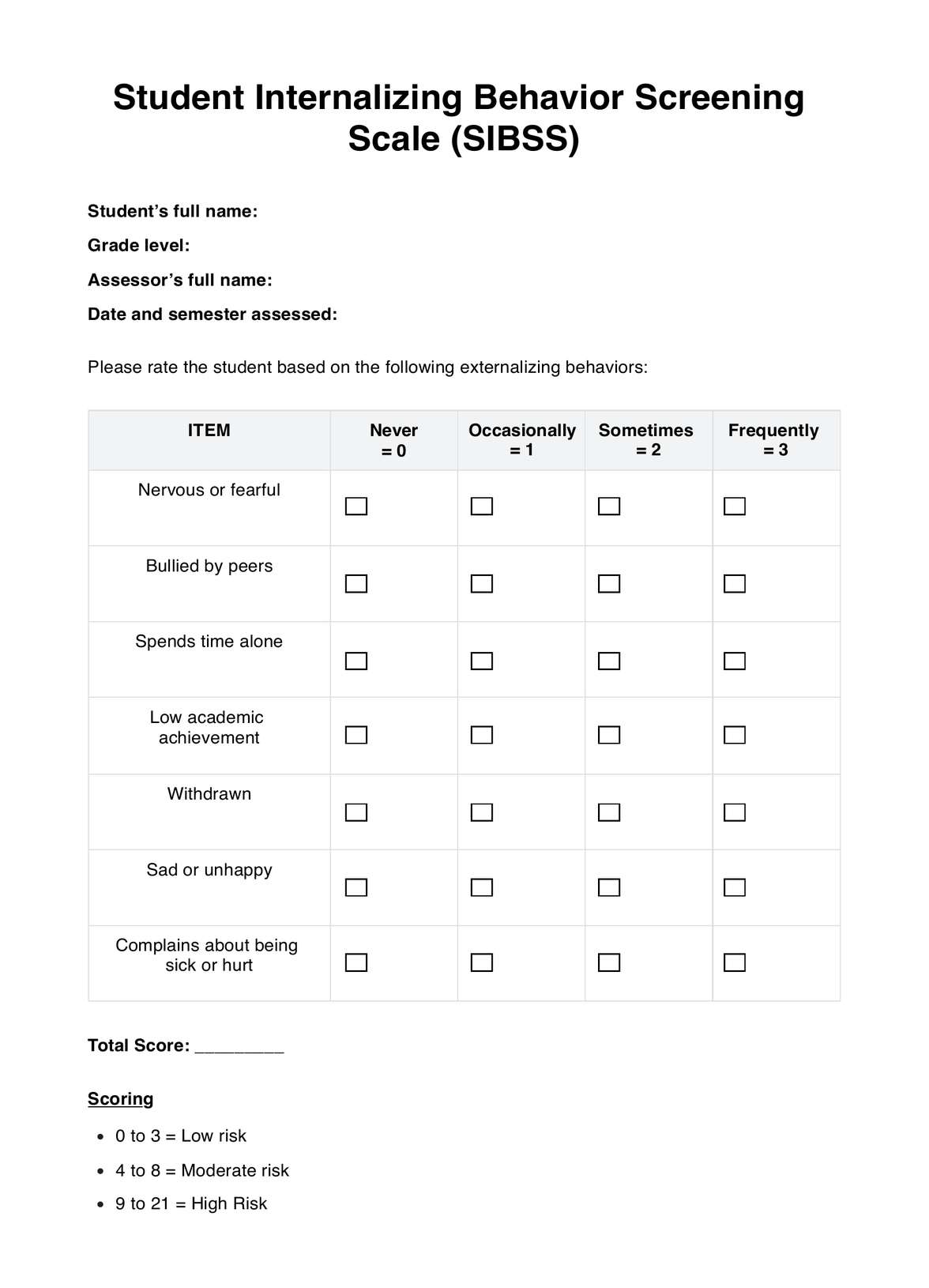
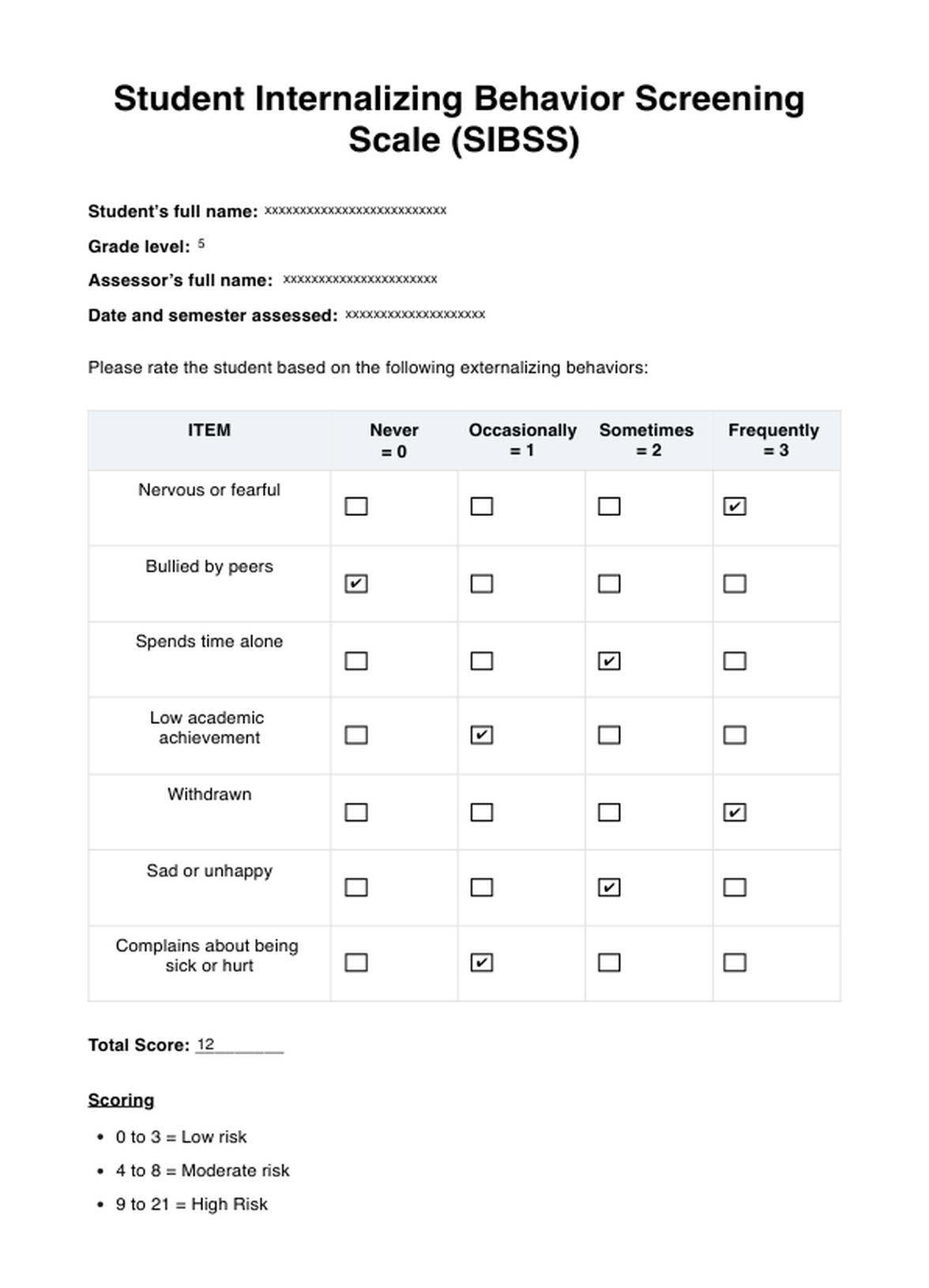














-template.jpg)






















































































